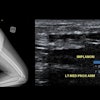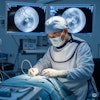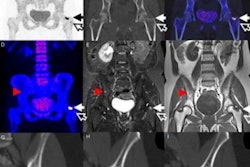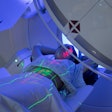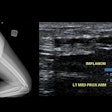
A clinical team from Liverpool, U.K., has revealed a 14-point strategy for improving radiation dose awareness and protection in a hybrid operating room. The checklist could serve as a useful guide for hospitals across Europe and beyond performing image-guided minimally invasive procedures.
Roy Hughes, a radiographer at Royal Liverpool Hospital, and his colleagues unveiled the following plan at the 2017 U.K. Radiological Congress (UKRC) in Manchester:
- Two-monthly dose reports: The aim is to provide detailed information on recent dose levels, Raysafe findings, and any hints and tips on how to best use a hybrid operating room.
- Improve dose monitoring of all staff and operators to show good practice in line with legislation and ensure safe levels of exposure to all staff.
- Distribute radiation reports to increase awareness of radiation dose, improve knowledge of local diagnostic reference levels (LDRLs), and share equipment hints and tips to reduce radiation exposure.
- Reduce the acquisition rates for digital subtraction angiography (DSA) (2 f/s) to lower the massive radiation burden DSA runs add to the total procedure dose.
- Use stored fluoroscopy loops to minimize the use of dose-heavy DSA runs.
- Reduced pulse fluoroscopy levels, regularly (3 f/s to 5 f/s) to adhere to the ALARA (as low as reasonably achievable) principle and reduce the overall procedural dose for the patients and staff numbers.
- Improve lead shielding for operators, side lead, head lead, and ceiling-mounted shielding to ensure operators and staff members' dose is reduced from the harmful effects of scatter, minimizing the chance of conditions such as a cataract.
- Improve use of radiation personnel protective equipment (PPE) such as glasses, thyroid-shielding and correct lead gowns to ensure all colleagues understood the need and importance of PPE. This has a zero-tolerance policy.
- Produce LDRLs to improve knowledge of radiation dose and subsequently reduce the LDRL.
- Use the large live screen to its maximum potential: The vendor altered the screen size to ensure images appeared magnified without the use of traditional dose increasing magnification.
- Raysafe live dose monitoring to highlight awareness of radiation dose and identify areas of the hybrid operating room that record higher levels, this minimizes the use of DSA and prompts all staff to keep safe distances from the x-ray source.
- Create a small, select team of radiographers: The aim is to improve radiographers' awareness of endovascular procedures and therefore reduce the operating times.
- Dedicated vascular hybrid team to develop knowledge of endovascular procedures and the equipment required, helping to develop service provision and improve interpersonal relationships within the team.
- Remove control from the surgeons and radiologists to prevent the random "panning" to find position from the operator and therefore prevent unnecessary radiation exposure.


